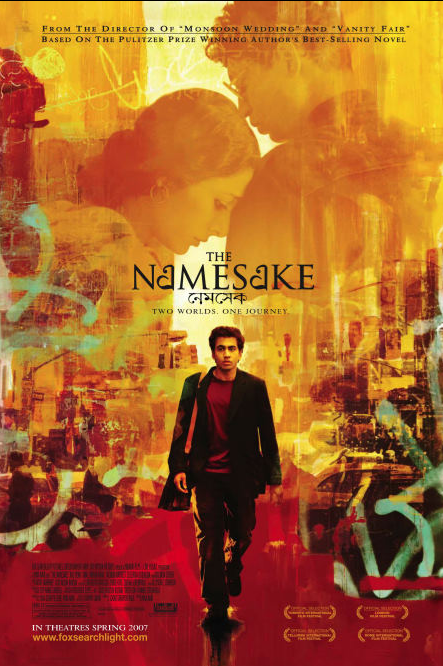The Namesake (2006), based on the book by Jhumpa Lahiri, is about an arranged marriage in India and the couple’s adjustment to life together in America.
As the husband who already has a job and apartment in New York, Ashoke is enlivened with Irrfan Khan‘s twinkling eyes and bemused smiles (first discovered in Puzzle). When frustration builds after his newly transported wife Ashima (Tabu) shrinks his clothes at the laundromat, he regrets his harsh words and tenderly calls her name until she emerges from behind a locked door. Small gestures, like Ashoke holding a strand of Ashima’s hair, create one of many stirring moments in this outstanding movie.
Talented Actors Express Understanding and Wisdom Through Brief Glances
In a fascinating closeup shot while still in India, Tabu as Ashima is equally captivating from the moment she places her bare feet in her future husband’s shoes. Later, in their freezing New York apartment, the actress palpably expresses longing for her family and homeland, with intense aching that sends her to bed. Matching the understated yet powerful style of Irrfan Khan, she also has the ability to express understanding and wisdom in a momentary glance.
Younger Set Captures Disinterest in Roots and Self-Involvement in New Way of Life
As the young Gogol, Soham Chatterjee helps to create a memorable scene on the jetty with Irrfan Khan, a pivotal moment that is referenced again later in the film. Kal Penn captures the older Gogol’s disinterest in his roots and often painful dismissal of his parents’ attempts to connect with him. Jacinda Barrett as Maxine and Zuleikha Robinson as Moushumi Mazumdar succeed in their annoyance-evoking portrayals of Gogol’s self-absorbed American and Indian-born but completely Americanized girlfriends, respectively.
Bonus Material Illuminating Director’s Filmmaking Process and Photographic Inspiration
One of the most extraordinary aspects of this film experience is the opportunity to learn about director Mira Nair’s process in the bonus material. During a class at Columbia University’s Graduate Film School, she thoughtfully discusses her commitment to making films about Indian society. Another remarkable extra is Photography as Inspiration, which shows images that inspired various scenes in director Mira Nair‘s filmmaking work.
With powerful storytelling originating from Jhumpa Lahiri and unforgettable cinematography that continues to linger, The Namesake is a movie to ponder long after the closing scene.





